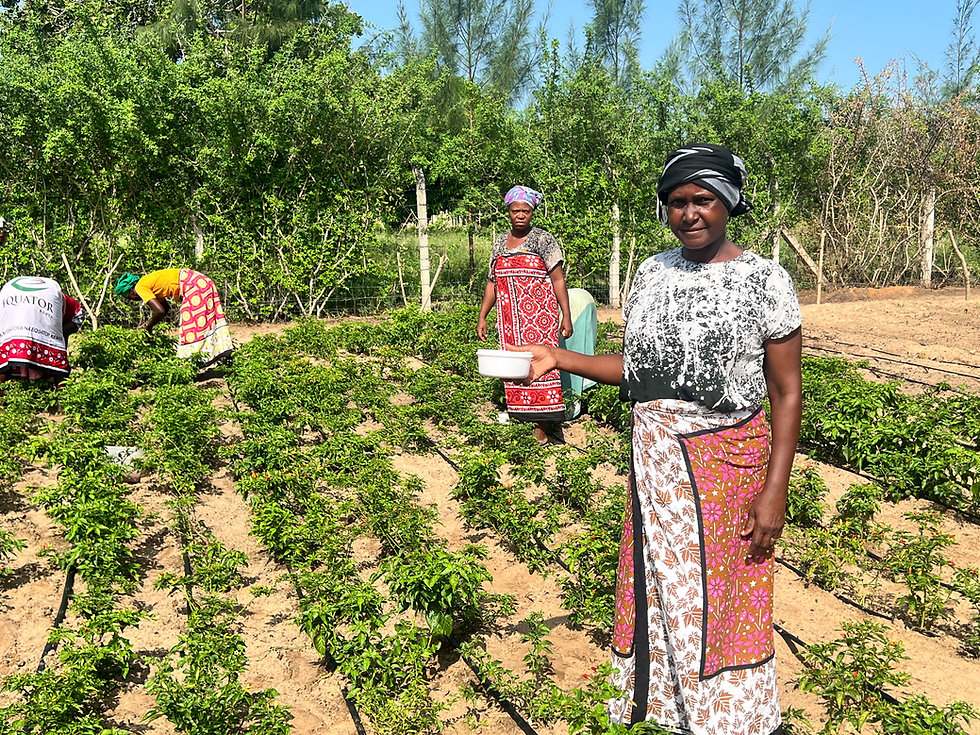SUED and COP26: Nature-based Solutions for Climate-Resilient Urban Economic Development
- Louisa Ssennyonga

- Nov 8, 2021
- 3 min read

Protecting Nature
There is now a clear consensus that any successful pathway to achieve global emissions targets, meet national net zero targets, or to build resilient communities and economic systems must include the restoration and protection of nature. Equally, unless we can increase the resilience of our natural environments and manage processes of environmental change, climate change poses a major threat to global biodiversity goals. The importance of these connections is highlighted at COP26 by Goal 2: Adapt to protect communities and natural habitats, including:
Protect and restore ecosystems
Build defences, warning systems and resilient infrastructure and agriculture to avoid loss of homes, livelihoods and even lives.
On SUED, we work to integrate nature-based solutions, climate resilience, and sustainable economic growth into the Urban Economic Plans (UEPs) that we develop with the rapidly urbanising towns across Kenya. At the core of our urban planning are blue-green infrastructure as well as the use of the natural environment as a driver for economic growth.
Nature-Based Solutions in Urban Areas
Blue-green infrastructure is the umbrella term for a range of soft approaches increasingly taken in urban design to address problems such as flooding and urban heat island effects. It is increasingly seen as a key component of any strategy to increase the resilience of urban areas to climate change, while at the same time providing multiple other climate, environmental, social and economic benefits. Blue-green infrastructure such as Sustainable Urban Drainage (SuDs) features – for example swales, ponds, soakaways and rain gardens – as well as expanding tree cover and green space in urban areas and integrating natural flood storage into recreational areas has been central to our work on SUED. In both Kisii and Kitui counties, for example, linear river parks are essential to the revitalisation of the city centre: they enhance the natural environment and biodiversity, create natural flood storage, reduce heat island effects, and create important active transport and recreational spaces.
Resilient Natural Environments: a Driver for Growth
As well as integrating nature-based solutions into urban development, our SUED team has also looked at bigger opportunities to use the natural environment as a driver for sustainable, inclusive growth. Urban development relies on inputs from natural and social support systems within their wider urban catchment areas. The impacts of climate change in surrounding rural areas will be severely felt in cities and towns, and are likely to cause disruptions to transport, water supply, food systems and value-chains. As a result, more people are expected to leave their homes which will further increase pressure on natural resources and on the infrastructure that supports the quality of life in cities and towns.
There are significant opportunities to develop comprehensive approaches that increase the resilience of natural systems and their linked urban areas, support inclusive job creation while protecting and restoring natural capital.
On SUED, we have seized these opportunities by:
Introducing integrated nature-based approaches: In the city of Kerugoya, future growth is highly dependent on the region’s water and natural resources, which are currently under significant stress. Pressures come from rapid and uncontrolled urbanisation, poor agricultural practices, pollution, and degradation of resources, as well as climate change. We introduced a unique nature-based approach to the UEP development process in Kerugoya: in order to make agri-processing more sustainable, we focused on the protection of the city’s unique water and natural resources and enhanced environmental resilience. This will also improve health and wellbeing of all citizens and foster a growing community that has previously been impeded due to resource issues.
Harnessing the blue economy: Lamu County’s outstanding range of endemic marine biodiversity has the potential to become a significant source of wealth creation for the county and its residents in the fishing and marine sector. At present, the fishing sector represents a major economic driver for the Lamu municipality – generating income and employment for a significant proportion of the population – but there are concerns over the sustainability of some activities such as overfishing and the pollution of marine ecosystems from sewer lines into the ocean. In line with the focus on the blue economy in the ‘Big Four’ agenda of Kenya’s Government, our team has established development framework for the Lamu county and municipality. The framework emphasises how the protection, restoration, and sustainable management of marine and coastal resources – including mangroves and sea-grass beds – have the potential to spur the region’s economic growth, create jobs and increase coastal resilience while protecting and enhancing the natural environment.




Comments